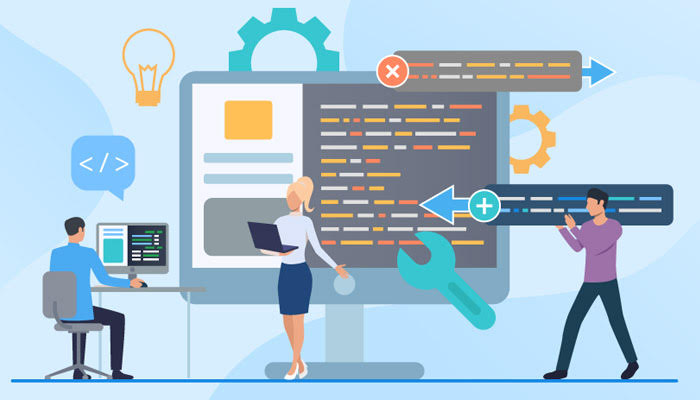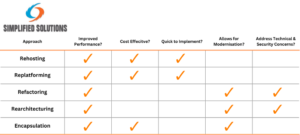In the ever-changing world of technology, many Membership Organisations become reliant on “legacy applications”, which are built on outdated technology and struggle to keep up with modern demands. This can severely hamper a Membership Organisation’s ability to grow and effectively engage with their members.
In this article, we’ll explore the challenges of legacy applications, how they can affect your organisation, and the strategies you can employ to deal with them.
The Challenges of Legacy Applications
1. Sluggish Performance
Are your members dependent on your organisation for quick responses? With legacy applications, this is near impossible. Legacy systems are notorious for being slow and inefficient, and hinder productivity, frustrating users and members alike.
2. Security Risks
One of the biggest challenges of legacy applications is their vulnerabilities to cyber attacks. Lack of updates and outdated security measures make them easy targets for hackers. When you may be holding some member data in your applications, it’s imperative that you are up to date with the latest security practices to give your members confidence that their data isn’t at risk. Securing members’ personal data is the top most priority for the membership organisations
3. Costly to Maintain
Legacy systems require constant maintenance and support that drives up costs, draining valuable time and resources that could be invested in newer technologies that enable greater member engagement.
4. Struggle to Scale
As your organisation and member base grows, so should your software. Legacy applications however are very inflexible, and struggle to adapt to increased demands.
5. Adaptability Woes
Legacy applications are rigid and cannot easily adjust to change, therefore hindering your ability to innovate and respond to new challenges for the benefit of your members.
6. Knowledge Silos
Legacy applications often come with poorly written and undocumented code, creating knowledge silos within your organisation. When employees move on, their successors are left struggling to decipher cryptic code, slowing down progress and innovation.
How to Modernise Your Legacy Applications
Legacy applications pose a significant challenge to organisations shriving for progress and to offer the best experience for their members. However there are strategies for dealing with legacy applications, which we explore below;
1. Rehosting: the migration of an application to a new environment, whether it be the cloud or a virtual machine. This involves the process of transferring it with little to no modifications to its underlying code.
Benefits: can facilitate a swift transition, ensuring minimal downtime and disruption to operations. It can also be a cost-effective solution, requiring fewer resources.
Drawbacks: does not effectively address underlying technological challenges that exist within the application. It also offers limited enhancements in terms of scalability and security, leaving potential vulnerabilities unaddressed.
2. Replatforming: the transferring of application components to a different platform while retaining its fundamental logic.
Benefits: typically results in a quicker process & implementation, and has the potential to address performance issues and enhanced security measures.
Drawbacks: may require custom development work, adding complexity and potential costs to the project. Also does not offer a comprehensive solution for modernisation.
3. Refactoring: the process of restructuring and optimising the current codebase while preserving its core functionality.
Benefits: enhances the quality and maintainability of the code, potentially leading to improved performance.
Drawbacks: can be time-consuming, demanding a thorough understanding of the codebase. May not fully resolve underlying architectural issues within the system.
4. Rearchitecting: a comprehensive overhaul of the application architecture, utilising modern technologies and adhering to best practices.
Benefits: the most thorough solution, effectively tackling all technical challenges and ensuring the creation of a resilient, future-ready system.
Drawbacks: time-consuming and incurs high expenses. Also carries a significant risk of introducing new bugs or errors into the system during transition
5. Encapsulation: surrounding the legacy application with a fresh API layer, which exposes its functionalities to contemporary systems.
Benefits: isolates the legacy system, enhancing security and facilitating smoother integration with modern infrastructure. Provides a temporary solution, allowing for time to make future decisions.
Drawbacks: doesn’t address internal technical issues within the legacy system and may pose challenges in terms of complexity during implementation and ongoing maintenance
Summary
Don’t let legacy solutions hold you, your organisation and your members back. Embracing newer technology can unlock the potential for agility, security, and growth in your organisation and for your members.
 There is no one-size-fits-all approach to modernisation. At Simplified Solutions, we’re here to help you evaluate your options and choose the approach that best aligns with your business goals and technical constraints.
There is no one-size-fits-all approach to modernisation. At Simplified Solutions, we’re here to help you evaluate your options and choose the approach that best aligns with your business goals and technical constraints.
Please contact us to find out more.










Leave A Comment